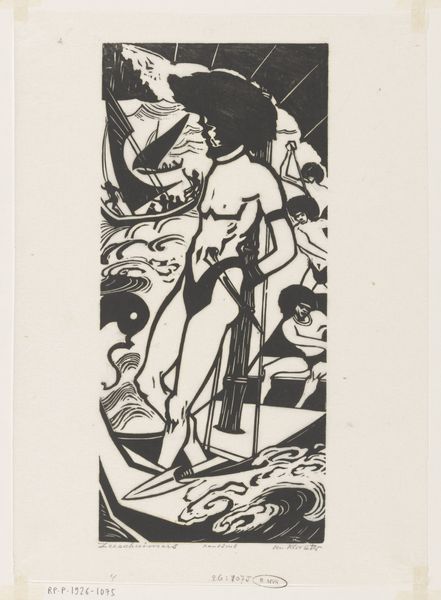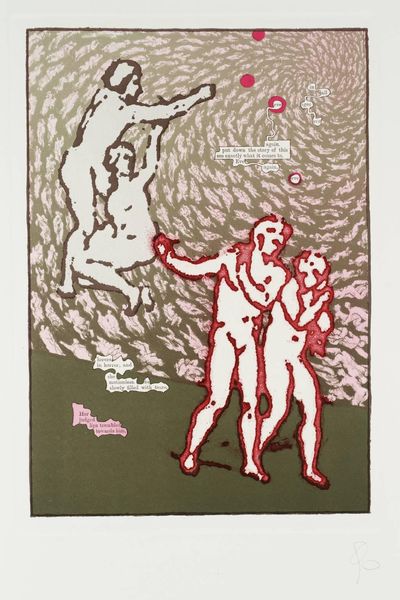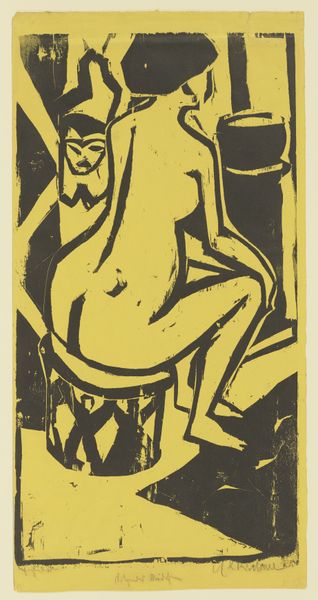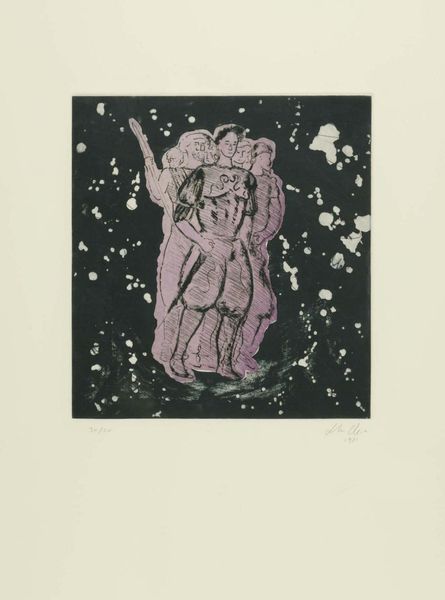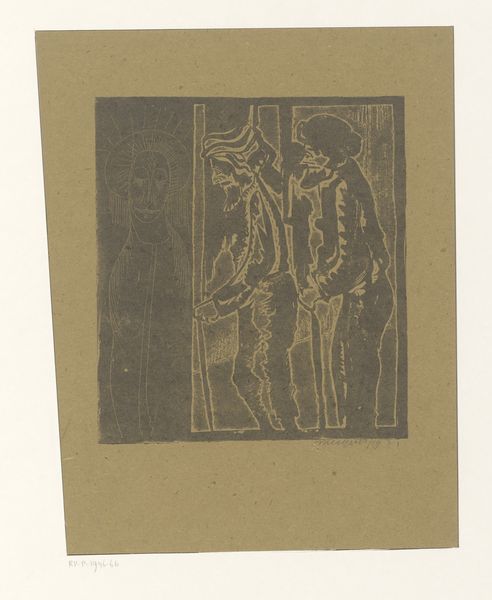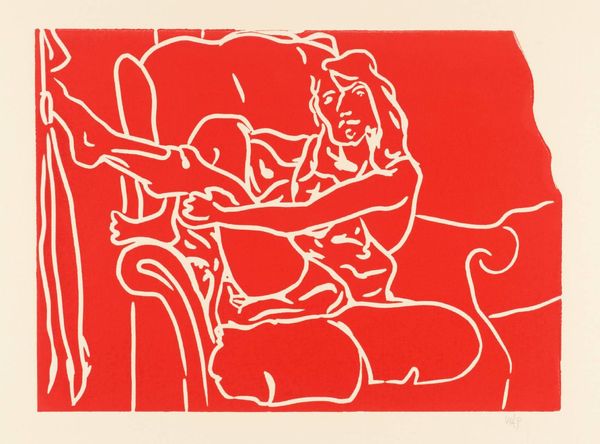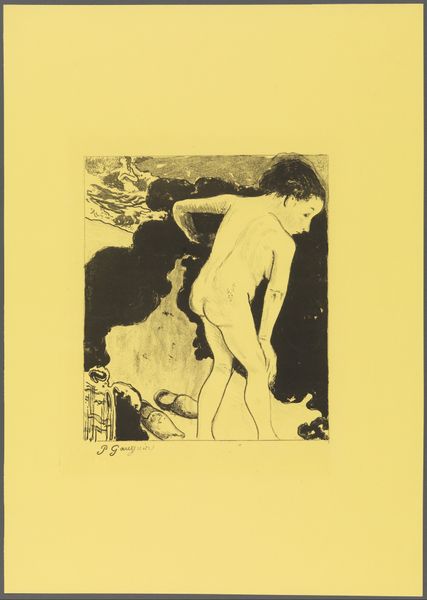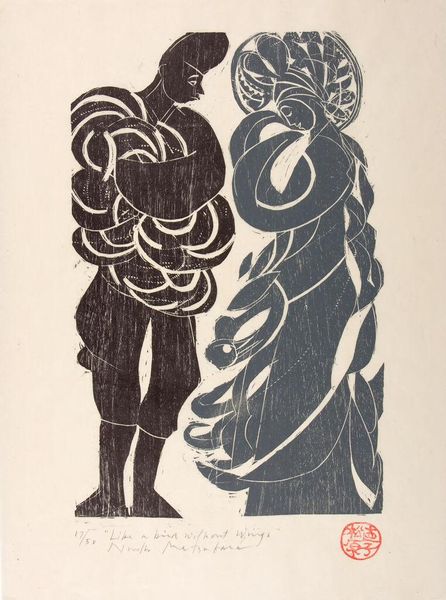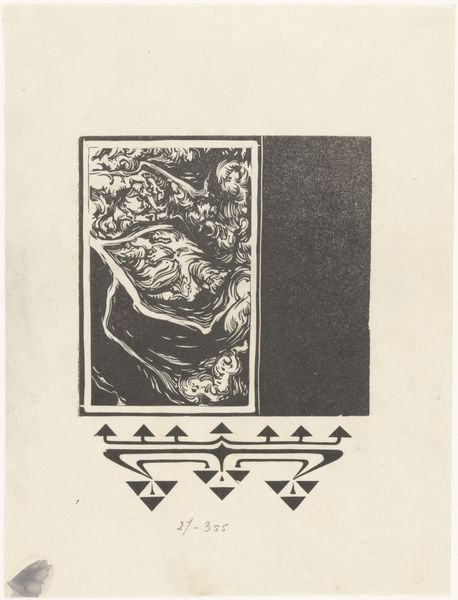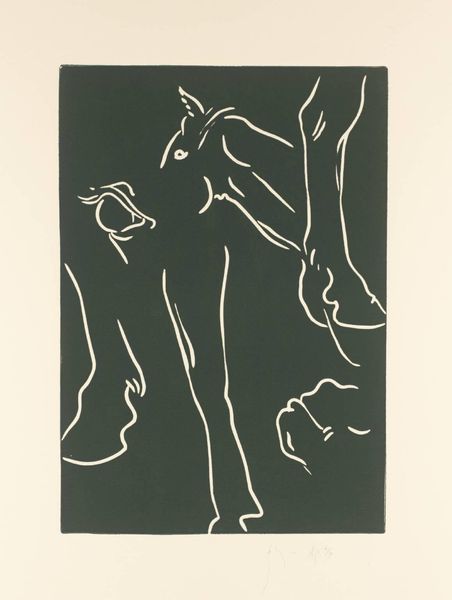
drawing, print, linocut
#
drawing
# print
#
linocut
#
figuration
#
linocut print
#
symbolism
#
erotic-art
Dimensions: height 320 mm, width 149 mm, height 399 mm, width 291 mm
Copyright: Rijks Museum: Open Domain
Curator: This is "Opgehangen man" or "Hanged Man" by Henri Gustave Jossot, likely created between 1893 and 1895. It's a linocut print rendered in striking red and black. Editor: Visually, it's very striking. The red figure against that stark black background immediately pulls you in. It feels quite grotesque, but in a captivating way. The expression is disturbing yet almost comical, if that’s possible given the subject matter. Curator: The use of linocut, a relatively inexpensive and accessible medium, is key. Jossot often critiqued bourgeois society. Mass-producible prints allowed his imagery to circulate widely, challenging established artistic hierarchies and social norms of the time. The Symbolist movement, to which Jossot was connected, allowed artists to explore unconventional imagery, making the political undertones more ambiguous, though nonetheless poignant. Editor: Definitely. You can almost feel the labor involved in carving that block. The rough edges and bold contrasts weren’t accidental. He highlights the process—the materiality—of the image itself. Red against the darkness implies strong contrasts with labor and, of course, also hints to suffering, so maybe that also highlights exploitation or an uncomfortable position the portrayed character is put into? Curator: Considering the period, the fin de siècle, there was a widespread sense of anxiety and social upheaval. Jossot was a socialist. His images offered him an opportunity to take a shot at existing social order and corruption, even questioning systems of justice. He later abandoned art to become a caricaturist. Editor: The figure itself is unsettling—arms contorted, tongue sticking out— but is almost dancing in a ghoulish parody of movement, almost grotesque theater. That rawness is so telling. The fact it's printed, reproduced, also connects to broader issues around labor, visibility and commentary. Curator: Exactly. Jossot was part of a generation grappling with rapid social and technological change. "Opgehangen man" makes us confront those anxieties. Editor: It makes me appreciate how the means of making— the humble linocut—amplified his message in his context and how well it's remained until this very moment. Curator: Precisely. This print captures a very specific moment of historical tension and delivers even nowadays.
Comments
No comments
Be the first to comment and join the conversation on the ultimate creative platform.
